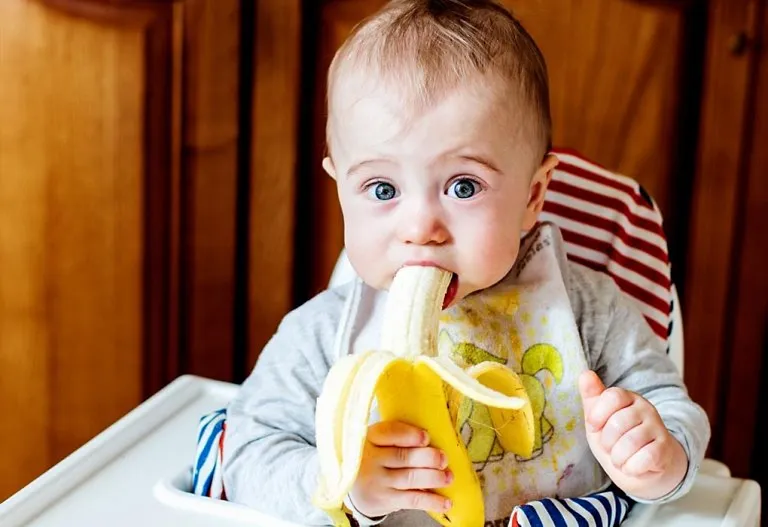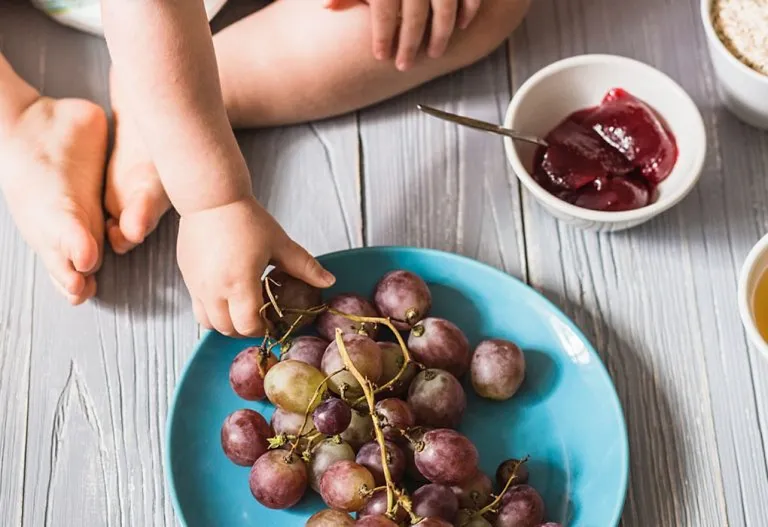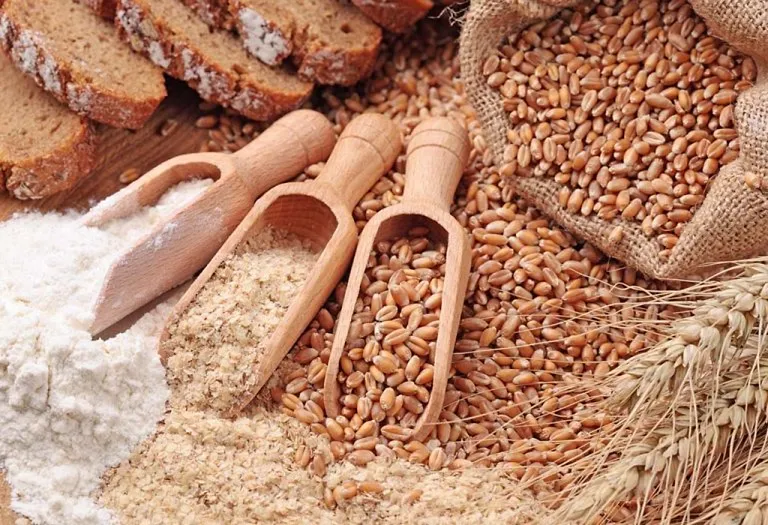Baby’s First Food – How to Introduce Solids to Baby?

- What Are Solid Foods?
- When Can Babies Eat Solid Foods?
- How to Introduce Solids to Infants?
- How Often and How Much to Feed a Baby?
- Signs My Baby Is Ready for Solids
- First Foods to Feed a Baby
- Baby Feeding Schedule
- What If Your Child Refuses to Eat Food?
- Solid Food Chart for Babies
- Different Food Allergies of Babies
- What If My Baby Is Choking?
- FAQs
Introducing your baby to solid foods is a significant milestone in their early development, marking the transition from breastfeeding or formula feeding to a more varied diet. This journey not only provides essential nutrients for growth but also sets the foundation for healthy eating habits. As a parent, choosing your baby’s first food can be both exciting and daunting. Here, we will guide you through the essential steps of introducing solids to baby and ensuring a smooth and enjoyable experience for both you and your little one.
What Are Solid Foods?
Solid foods transition babies from milk to adult food. After about 4-6 months, nutrition from milk, either formula or breast milk, is insufficient for the baby’s nutritional needs, and solid foods need to be added to the baby’s diet.

When Can Babies Eat Solid Foods?
The digestive systems of babies will become ready for solid food by six months. They will also be able to have the physical skills of swallowing solid foods by that time. Solid foods for infants should start when your baby shows signs of readiness (1).
How to Introduce Solids to Infants?
Introducing solid foods to a baby can be done by pureeing, steaming or mashing each item at a time. Start with fruits, move to boiled lentils, rice, ragi, etc. Give one type of food for 2-3 days to see if the baby has an allergy. Remember not to add any salt or sugar to the food. Start with a small teaspoon, and see how the baby reacts to the spoon’s feel and the food’s texture before giving it to her. If the baby refuses, do not force, but try again after a week or so (3).
How Often and How Much to Feed a Baby?
Start with one tablespoon once a day at six months. A 6-month-old baby feeding schedule can be two meals of 2-4 tablespoons.
Signs My Baby Is Ready for Solids
You must look out for your baby’s readiness to start solid foods. Look for the following signs (2):
- Your baby can keep his head upright and be steady in that position. He should also be able to sit upright in an infant feeding seat or high chair so that he can swallow properly.
- Your baby has gained weight significantly and nearly doubled his birth weight.
- Your baby is curious about what you are eating and looks at what you are eating or reaches out.
First Foods to Feed a Baby
Each baby is unique, so your doctor may give the best advice about solids. In fact, the American Academy of Pediatrics (AAP) suggests giving meats to replace iron, which starts reducing at six months. Most parents start by giving single-ingredient food without salt or sugar (4). You can also give pureed single-grain cereal, sweet potatoes, peaches, or bananas.
What Foods to Eat?
Baby’s first food at six months should be easy to digest and rich in essential nutrients to support their growth and development. Although eating a vast variety of foods is good, choosing the right first foods is essential for their development and health. Here are some great options to start with:
1. Single-Grain Cereals
Iron-fortified single-grain cereals like rice or oatmeal are gentle on your baby’s stomach and easy to digest. Mix with breast milk or formula to the desired consistency.
2. Vegetable Purees
Start with mild-tasting vegetables like carrots, sweet potatoes, peas, or squash. Steamed and pureed, these veggies provide essential vitamins and minerals (6).
3. Fruit Purees
Mild fruits such as apples, pears, bananas, and avocados are excellent choices. They are naturally sweet and packed with essential nutrients and fibre (7).
As your baby grows, to keep things interesting for your little one (around 7 or 8 months), try incorporating these foods:
- Cheese
- Beans
- Tofu
- Pasta
- Whole Milk Yoghurt
- Mashed Eggs
- Minced Meat (chicken, lamb, turkey, or beef)
What Foods to Avoid?
While introducing your baby to solid foods is an exciting milestone, it’s equally important to know which foods to avoid to ensure their safety and health. Some foods can pose choking hazards, allergic reactions, or digestive issues for your little one. Here are some foods to steer clear of during the early stages of solid feeding:
1. Honey
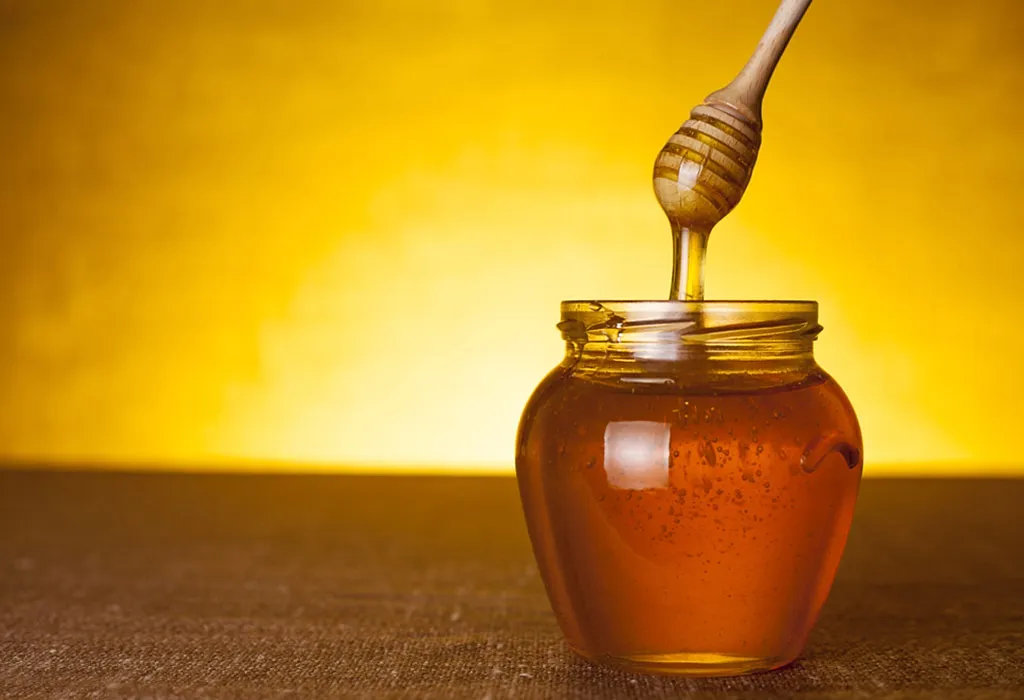
Honey is sweet and all-natural but could contain spores of Clostridium botulinum bacterium. These spores can multiply in baby’s intestines and infant botulism could develop. Older babies have mature digestive systems which can fight off this type of botulism, but babies up to 1-year-old can have serious consequences. Therefore, honey is not recommended for babies below one year of age (8).
2. Milk

Cow or soya milk straight from cartons could contain proteins that the baby cannot digest. Some minerals may even have an effect on their kidneys. For the first year, stick to breast milk or formula milk. Some babies may also be intolerant to lactose in such products and which may cause allergic reactions like diarrhoea (10).
3. Peanut Butter
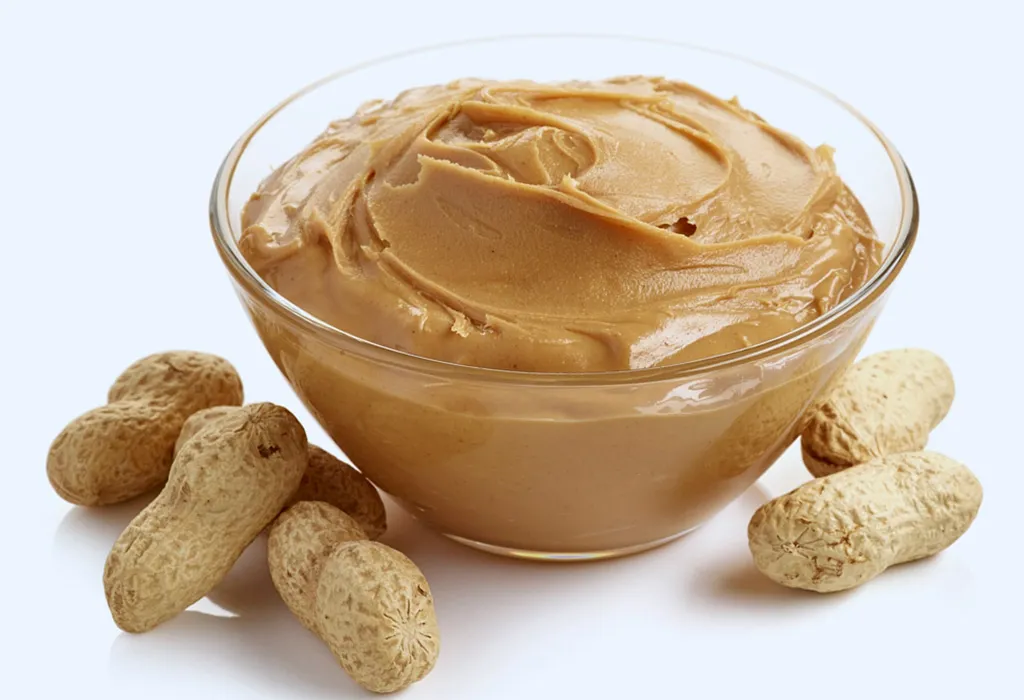
It is known to cause serious allergic reactions. Its thick consistency is also a choking hazard.
4. Some Fish

Mackerel, shark, swordfish, and tuna have high levels of mercury that are too high to be consumed by children under a year old. If your family has a history of allergies to shellfish do not introduce them to the baby. Some shellfish like oysters and lobster can cause severe allergic reactions, so wait till the child is three before trying them out (9).
5. Citrus Fruits (Aren’t allowed until eight months)

Oranges or grapefruit are acidic in nature and can cause stomach upsets. It’s best to cut such berry fruit into small pieces and dilute with water before giving it to the baby. Observe any reaction before introducing them into your baby’s diet.
6. Salt (Avoid until six months of age)

Babies need less than 1 gram a day. The baby’s kidneys are not yet well developed to process large amounts of salt. Processed food that contains sodium is best avoided.
7. Seeds and Nuts (Safe in powdered form after eight months of age )

Seeds and nuts are normally highly allergic. The baby’s airway is small and hence it could also be a choking hazard (9).
8. Egg Whites

Babies can have allergic reactions to eggs, especially egg whites. These are unfortunately extremely common.
9. Chocolate

The caffeine in the chocolate could cause allergies. The dairy component of the chocolate could be difficult to digest. There is also a choking risk. Tea and coffee also contain caffeine, hence they are best avoided.
10. Foods With Choking Risks
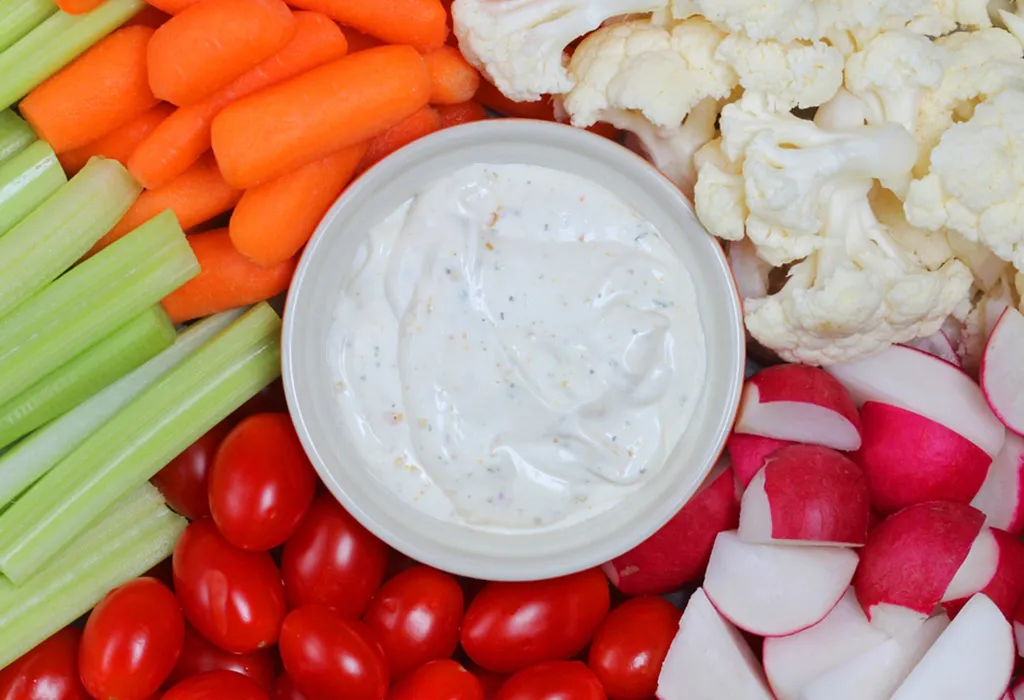
Any raw vegetables that are firm and hard, and foods like popcorn, hard candy and gum are associated with choking risks and hence best avoided.
11. Wheat (In case of gluten allergy /Celiac disease in genetics)
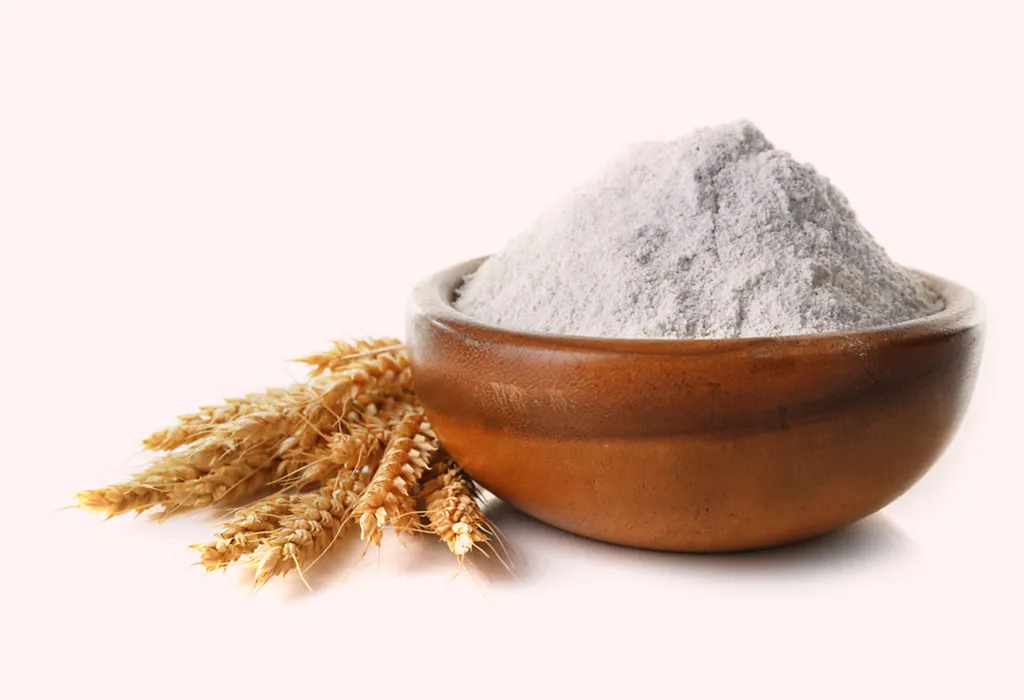
If there is a known history in your family to gluten intolerance, it’s better to wait until the baby is a year old before introducing foods containing a significant part of wheat to the baby.
12. Carbonated Drinks
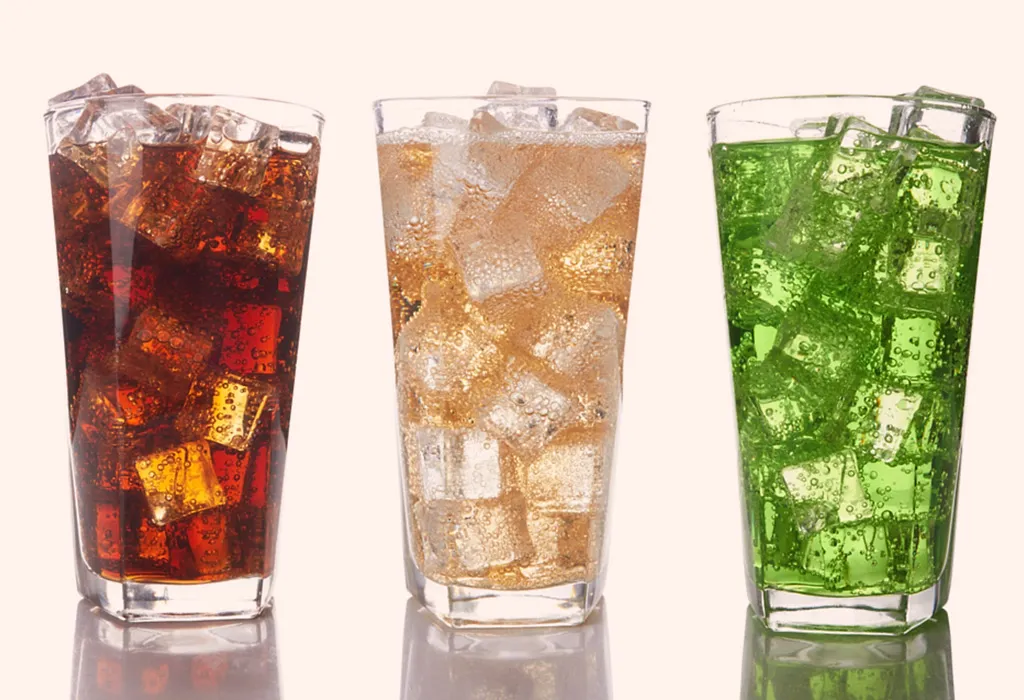
Colas and sodas contain a high concentration of sugar, sodium and artificial flavourings. These ingredients are not good for babies. The gas used to carbonate such type of drinks can also cause upset tummies in babies (11).
Baby Feeding Schedule
Remember, there’s no one-size-fits-all feeding time or schedule. If you’re breastfeeding and notice a dip in your milk supply, consider offering solids at that time. Some babies may prefer solid food for breakfast. Your baby will tell you when she’s ready for solids, either by eagerly opening her mouth or turning away.
You can begin with one meal a day and then try one in the morning and one in the evening. Gradually increase the frequency and give three solid meals daily as your baby grows. Experiment till you find a schedule that suits you and your baby.
When the baby is 6-9 months, try to start her on a regular breakfast, lunch, and dinner feeding schedule. It will give her time to get used to a schedule of eating.
Here is a chart you may use as a reference to schedule your baby’s meals:
| Age | Food | Number of meals per day | Serving Size | Feeding Tips |
| 0-4 months | Breast Milk | On-Demand | 5 – 10 minutes from each breast |
|
| Formula – 1 Month | 6-8 times | 60-100 ml | ||
| Formula – 1-2 months | 5-7 times | 90-150 ml | ||
| Formula – 2-3 months | 4-6 times | 120 – 200 ml | ||
| Formula – 3-4 months | 4-6 times | 150 – 250 ml | ||
| 4-6 months | Breast Milk or Formula | 4-6 times | 150-250 ml |
|
| 6-8 months | Breastmilk | 3-5 times | 150-250 ml |
|
| Formula | 3-5 times | 2-4 tbsp | ||
| Baby Cereal | 1-2 times | 2-3 tbsp | ||
| Strained Fruits and vegetables | 2-4 times | |||
| 8-12 months | Breast Milk | 3-4 times | 150 ml – 250 ml |
|
| Formula | 3-4 times | 2-4 tbsp | ||
| Yoghurt | 3-4 times | 150 ml – 250 ml | ||
| Cottage Cheese | Introduce/ offer | ¼ to ½ cups | ||
| Baby cereal | Introduce/ offer | 1-2 tbs | ||
| Bread or crackers | 1– 2 times | 2-4 tbsp | ||
| Dry cereal | 1– 2 times | A small amt | ||
| Vegetables and Fruits (mashed) | 3-4 times | 3-4 tbs | ||
| Fruit juice (Not orange) | Once | 120 ml | ||
| Meat and beans (Soft cooked) | 1-2 times | 3-4 tbsp |
What If Your Child Refuses to Eat Food?
It’s very common for babies to avoid solid food. They may not like the texture or haven’t developed the skills to push the food into their throat. It is crucial not to force the baby to eat. Instead, ensure they are getting plenty of milk.
Encourage your baby to touch and play with the food. This will help them get used to the texture and shape of the food. Allow them to interact with the food. The more they do, the more comfortable they get with the food and the closer they are to eating it. Remember, babies will fling food everywhere, and that’s okay. It doesn’t mean they dislike the food; it just means they are exploring and learning.
When the baby is at least tolerating the food on their hands, show them how to take it into their mouth and taste it. Repeat several times. Once they eat from their hands, offer a spoon. Give them time, as eating, chewing, and swallowing are skills they need to learn. They do not come naturally to babies.
Babies have difficulty coordinating the physical movements required to get food into their mouths. Their natural reaction is to push the food out with their tongues, so give your baby time to adjust.
Solid Food Chart for Babies
When do babies start eating baby food, is a question mothers are often confused about. The following chart will clear some of the doubts about baby foods by age.
| Time | Solid food amount |
| 0 to 6 months |
|
| 6 to 7 months |
|
| 7 to 9 months |
|
| 9 to 12 months |
|
Food should be well mashed and cooked or cut into small bite-size pieces.
Ensure the baby gets her requirement of breast or formula milk. You can reduce the baby’s milk intake gradually to three to four feeds per day along with a gradual increase in solid foods.
Different Food Allergies of Babies
Signs of an allergic reaction to a new food could vary from almost immediate to a few hours. Normally, the reaction is mild. If severe, like hives, diarrhoea or vomiting, contact your doctor immediately.
Extreme reactions, such as wheezing, difficulty in breathing, or facial swelling, are serious and require immediate hospitalisation (5).
What If My Baby Is Choking?
If the baby is unable to breathe, there may be an obstruction in the airway. Assess the situation quickly, and you will need to help her remove it. Use back blows and chest thrusts to try to remove the obstruction. Use the heel of your hand to give some blows to the baby’s shoulder blades. The blow will most likely dislodge the obstruction.
If any obstruction is visible, you can try to remove it. However, it is not advised to probe the child’s mouth blindly with your finger, as this could push the obstruction further into his throat.
Gently tap the child on the shoulder and shout. Begin CPR if the baby does not respond or if you find the baby is not breathing. Compress the chest gently at 100-120 per minute after laying the baby on the back.
FAQs
1. How do I know if my baby is getting enough nutrients?
Monitor your baby’s growth and development through regular paediatric check-ups. Your paediatrician will track your baby’s weight, height, and overall health to ensure they get the nutrients from their diet.
2. How can I encourage my baby to try new foods?
Be patient and offer a variety of foods without pressure. Babies may need to try a new food several times before accepting it. Make mealtimes pleasant, and consider eating the same foods together to model positive eating behaviour.
Infants and solid foods require a careful introduction to ensure a balanced diet while minimising risks. Your baby will take time to get used to each new food’s taste, texture, and sensation, so you need to start the transition keeping this in mind.
References/Resources:
1. When Can My Baby Start Eating Solid Foods?; Nemours KidsHealth; https://kidshealth.org/en/parents/solid-foods.html
2. Starting Solid Foods; American Academy of Pediatrics; https://www.healthychildren.org/English/ages-stages/baby/feeding-nutrition/Pages/Starting-Solid-Foods.aspx
3. When, What, and How to Introduce Solid Foods; Centers for Disease Control and Prevention; https://www.cdc.gov/nutrition/infantandtoddlernutrition/foods-and-drinks/when-to-introduce-solid-foods.html
4. Your baby’s first solid foods; NHS; https://www.nhs.uk/conditions/baby/weaning-and-feeding/babys-first-solid-foods/
5. Feeding Your 4- to 7-Month-Old; Nemours KidsHealth; https://kidshealth.org/en/parents/feed47m.html
6. Your baby’s first foods: Mini Parenting Master Class; UNICEF; https://www.unicef.org/parenting/food-and-nutrition/first-foods-for-baby
7. From around 6 months; NHS; https://www.nhs.uk/start-for-life/baby/weaning/what-to-feed-your-baby/from-around-6-months/
8. Why Should Babies Not Have Honey?; Nemours KidsHealth; https://kidshealth.org/en/parents/honey-botulism.html#
9. Foods to avoid giving babies and young children; NHS; https://www.nhs.uk/conditions/baby/weaning-and-feeding/foods-to-avoid-giving-babies-and-young-children/#
10. Foods and Drinks to Avoid or Limit; Centers for Disease Control and Prevention; https://www.cdc.gov/nutrition/infantandtoddlernutrition/foods-and-drinks/foods-and-drinks-to-limit.html
11. Foods and drinks to avoid; NHS; https://www.nhs.uk/start-for-life/baby/weaning/safe-weaning/food-and-drinks-to-avoid/
Also Read:
Baby Finger Foods
All about Baby Food & Nutrition
Baby Food Stages – Your Child’s First, Second and Third Food
Was This Article Helpful?
Parenting is a huge responsibility, for you as a caregiver, but also for us as a parenting content platform. We understand that and take our responsibility of creating credible content seriously. FirstCry Parenting articles are written and published only after extensive research using factually sound references to deliver quality content that is accurate, validated by experts, and completely reliable. To understand how we go about creating content that is credible, read our editorial policy here.










